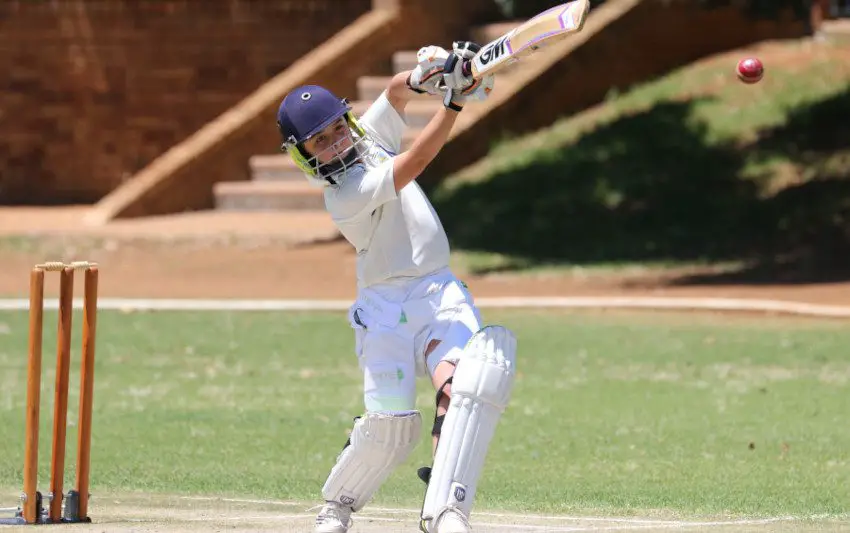Table of Contents
We know that an effective warm up can be vital in terms of preventing injuries in any sport, but what are the exercises that we should be doing? Here is a list of the key workouts you need before stepping out onto a cricket field.
Building Up
These are the building blocks of a good warm up. Be sure to do this in order and start with these build up exercises first.
Slow walk
The idea is that this is a slow build up. It’s important not to overdo things too quickly and the more cautious approach to warm ups helps with this.
That’s why we’re starting with a slow walk. From a standing start, take around ten paces in a straight line, stop, turn round and walk back to the original position. Do this two or three times and you should actually feel some warmth running through the legs.
Lunges
A lunge follows on from that initial set. Essentially, what we are doing here is walking while lunging out with our legs on every step. Start with a walking lunge for ten paces moving forward.
Complete those ten paces, stop, turn around and repeat until you get back to your original starting position.
With every lunge, we are looking to sink down into the ground with the back leg and the knee should touch the ground. Remember not to bounce. As you do that, hold each step for a second or two and continue.
Groin Warm up Exercises
The groin area is one of the most important parts of the body to warm up. For those that don’t play regularly or haven’t warmed up correctly, there can be significant damage if there is a sudden twist or sharp movement in this area.
Start the groin warm up by laying down flat on your back. Bend the knees upwards and move the soles of your feet inwards. Now move your knees down towards the floor. At this point you should be able to feel the groin muscles stretching.
Pause at the end of the sequence and take some deep breaths. Now hold the pose for around 20 to 30 seconds. Repeat the exercise around five to ten times.
Squats and Jumps
For squats, look to go down as low as possible. Your bottom should reach ankle level, but your knees shouldn’t stretch out beyond your feet.
Depending on your overall fitness level, you should attempt around 10 to 15 of these. Sink down and hold the pose for a few seconds.
Jumps help to work out a number of different muscle groups in the legs. These will generally be star jumps where the individual raises their arms up above their heads and spreads them as wide as possible. The legs also stretch out during the jump and the body forms the shape of a star.
This is another exercise where 10 to 15 repetitions are generally recommended.
Jogging (High knee spot jogging)
A period of jogging can now follow. There’s no need for any great levels of speed at this stage. What we are looking for is to get the legs loose and the blood pumping.
With that in mind, players should be jogging on the spot with high knee raises incorporated into the routine.
Sprints
The final stage of this section is sprinting. Cricket is an unusual sport in the sense that it requires a lot of standing around before a player has to sprint into action.
This is why it’s important to try to replicate the type of running that may be required in a match situation. From a standing start, sprint to a cone marked at a ten yard distance. Pause for a quick breather and turn around before sprinting back to the original position.
A small series of around 5 to 10 sprints should offer the ideal preparation for this.
Hamstring Warm Up
Hamstrings can be very susceptible to injury if a player hasn’t warmed up properly. That’s why there is a series of warm ups designed specifically for these important muscles.
Hamstring Kicks (Front kicks, Side Kicks, Toe Touch)
A front kick will help to lengthen the muscles in the backs of the legs. Put your hand out in front of you before you start the routine. Attempt to kick that hand with the leg on the same side.
Don’t worry: There is unlikely to be enough force to cause any damage. Look to perform ten repetitions before moving on to the other leg and hand.
A side kick is similar: Once again, we are putting our hand out and looking to kick it with the leg. This time, the hand is placed outwards, to the side of the body. Aim for ten repetitions with each hand and leg.
The toe touch also helps with stretching and flexibility. Stand up straight and bring the tips of the fingers down to the toes for ten repetitions.
Upper Body
The following exercises are all for the upper body. Each one begins from a still position and will prove effective for loosening and warming up the muscles before you enter the field of play.
Arm Rotations
This is a good one for fast bowlers but all cricketers can benefit. Simply spin each arm around in alternate directions. Start slowly and then gradually increase the speed.
Do this for 15 revolutions. If you feel the blood rushing into your hands, stop and move on to the next exercise.
Shoulder Raise
Get into position for shoulder raises by lying on your back. Now put your hands on the floor, underneath your shoulders. Your hands then push your back and your torso up until they lock.
Repeat this exercise around ten times.
Deltoid Stretches
The deltoids are triangular muscles at the very top of the shoulders. These can be susceptible to strains if not properly warmed up, so it’s time to focus on these.
Reach one arm across the chest. Use your opposite hand to hold this against your upper arm. Now start to slowly bring the arm across the body. Pull as far as possible and allow for the stretch to reach in deep to the back of the shoulder.
Pause, breathe deeply, hold for thirty seconds and repeat.
Neck Muscles Warm-up
To warm up the neck muscles, stand up straight and make sure that your head is square and central between your shoulders. Now lower your head and place your chin against your chest.
Hold this position for between fifteen and thirty seconds. After this, slowly lift your head back up, tilt it and face towards the ceiling. Hold once again for up to thirty seconds.
Repeat several times up to a maximum of ten repetitions.
Conclusion
Even if you’re playing a friendly game of village cricket, you should look to avoid unnecessary injuries. They can keep you out of future games and may even lead to time away from work.
It’s unfortunate that many of these issues are caused by players not warming up properly. Sudden exertion is not good for the body and that’s how many sporting injuries are caused.
With that in mind, look to follow the advice in this round up and you stand a better chance of avoiding injury problems moving forward.


